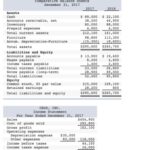Audit Materiality Definition, Examples Top 3 Types
Content
- ‘The effect of domain—specific experience on evaluation of management and representation in analytical procedures’
- What is the meaning of CSR (Corporate social responsibility) and how to adopt it?
- Business triage involves allocating limited resources to achieving realistic outcomes
- HR and Sustainability
- What is Materiality: definition

The Securities and Exchange Commission has recommended that an item constituting at least 5% of total assets must be disclosed separately in the balance sheet. However, even much smaller items can be considered material and it will ultimately depend on the judgment of the company. At times decisions on materiality are judgments made on the basis of the surrounding circumstances coupled with the size and nature The New Importance Of Materiality of the misstatement. Our Practice Statement is designed to promote positive changes in behavior, encouraging companies to exercise judgement when deciding what information to include in in their financial statements. In addition, the Practice Statement includes specific guidance on how to make materiality judgements on prior period information, errors, and covenants, and in the context of interim reporting.

Our 2022 Annual Report and Accounts and the Planet & Society section of our website, set out the actions we’re taking on each of the 11 material sustainability issues. Automating part of or the entire materiality assessment process can save sustainability managers the time, money, and effort normally involved in conducting an assessment manually. To ensure corporate strategy and resulting workflows remain relevant and aligned with the ESG priorities, the evolution of materiality insights should be presented to Risk, ESG committees and the Board.
‘The effect of domain—specific experience on evaluation of management and representation in analytical procedures’
For instance, conducting in-depth qualitative studies into the process by which different users of information make sense of and discern between different types of material information in sustainability reports would be useful. This could https://kelleysbookkeeping.com/ for instance be done by means of in-depth interviews or observation studies. An alternative empirical strategy, inspired by the approach of Reimsbach et al. , would be to conduct experimental investigations of reporting formats.
- Select a well-known company and explain two ways that computerized accounting helps this business to be successful from an e-commerce standpoint.
- It should then communicate the identified priorities to appropriate functions and teams throughout the business.
- Explain why an internal audit is useful in an organisation and how audit reports, assessments and recommendations can help improve Corporate Governance processes and objectives.
- However, we do not believe this analysis of the aggregate effects should serve as the basis for a conclusion that individual errors are immaterial.
- We assessed each issues importance to our stakeholders, using our own stakeholder research and third-party research to determine whether the issues were of high, medium or low importance to each stakeholder.
In this regard, we note that Commission rules generally require audited financial statements to be prepared in accordance with U.S. GAAP or IFRS, and to be included for each period specified in those rules. We also note that comparative financial statements facilitate an investor’s trend analysis to identify changes in financial results of a registrant over time and to inform investment decisions. Accordingly, we view financial statements prepared in accordance with U.S. GAAP or IFRS, as required by Commission rules, to be the starting point for any objective materiality analysis.
What is the meaning of CSR (Corporate social responsibility) and how to adopt it?
Grewal et al. moreover found that only 42% of shareholder proposals relate to sustainability topics that are material, whereas Grewal et al. found that companies that disclose more material sustainability information have higher stock price informativeness. In principle, there is nothing problematic in having two rival approaches to materiality, as long as both are clearly defined and communicated and the subsequent use of the concepts in practice is well-informed. Arguably, when inspecting the GRI and SASB sources outlined above, the concepts are clearly defined and communicated in the initial sources. We propose, however, that there are tensions between the two approaches to materiality as they are applied in practice and that these can lead to confusion or wrongful conclusions being drawn by users of sustainability performance information. The users of sustainability reporting information require clarity in the communication of materiality in non-financial reports. The auditor may designate an amount below which misstatements would be clearly trivial and would not need to be accumulated because the auditor expects that the accumulation of such amounts clearly would not have a material effect on the financial statements.
What is the importance of materiality?
The principle of materiality is essential in preparing financial statements, as it helps companies determine what information to include and what to exclude to prepare the entity's financial reports. Materiality is one of the four constraints of GAAP (Generally Accepted Accounting Principle).
For example, any fraud where employees attempt to help the company by artificially enhancing earnings for financial position would be a fraud for the company. On the other hand a fraud where someone attempts to harm the company by misusing or misappropriating its assets for their own benefit would be against the company.
Business triage involves allocating limited resources to achieving realistic outcomes
By means of examples and an empirical snapshot of stakeholders in Norwegian financial markets, we have discussed tensions and potential for conflation in practice. We have argued that there is currently some conflation in the conversation about and application of, materiality analyses as a tool for sustainability management and reporting. We have shown the problems of the coexistence of different understandings of materiality and how they may lead users of sustainability reporting information astray.



Leave a Reply
Want to join the discussion?Feel free to contribute!